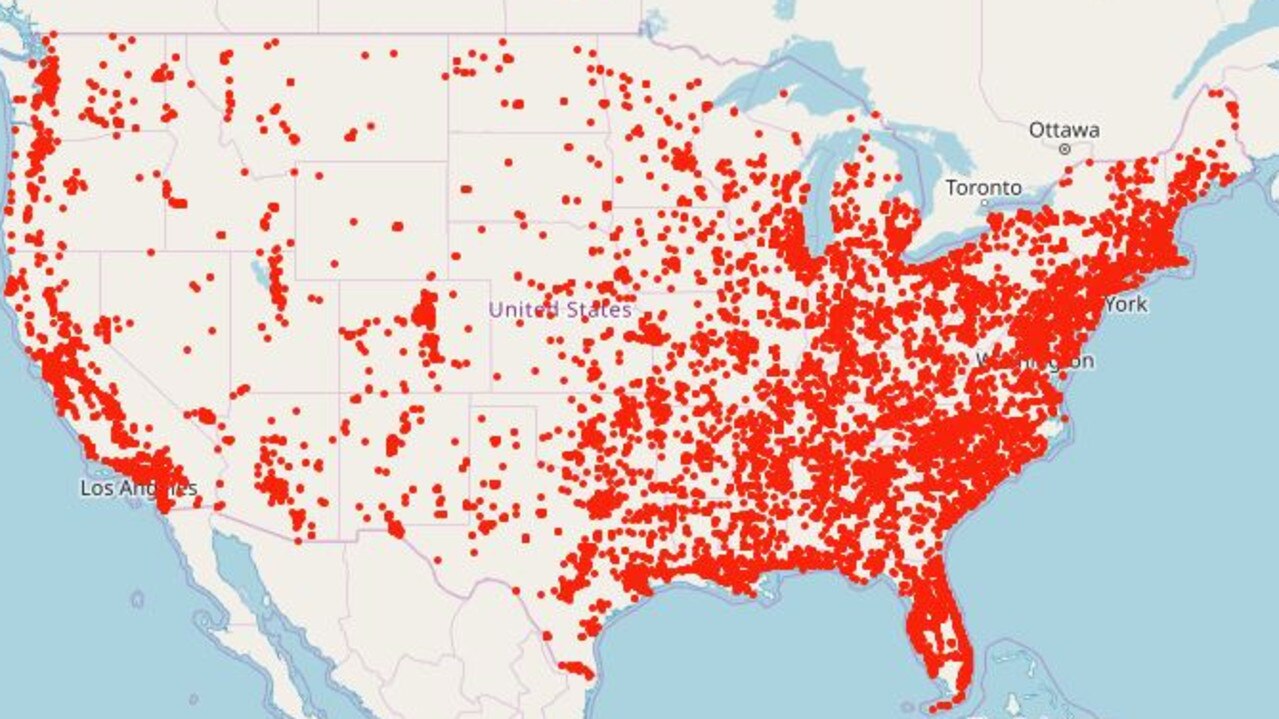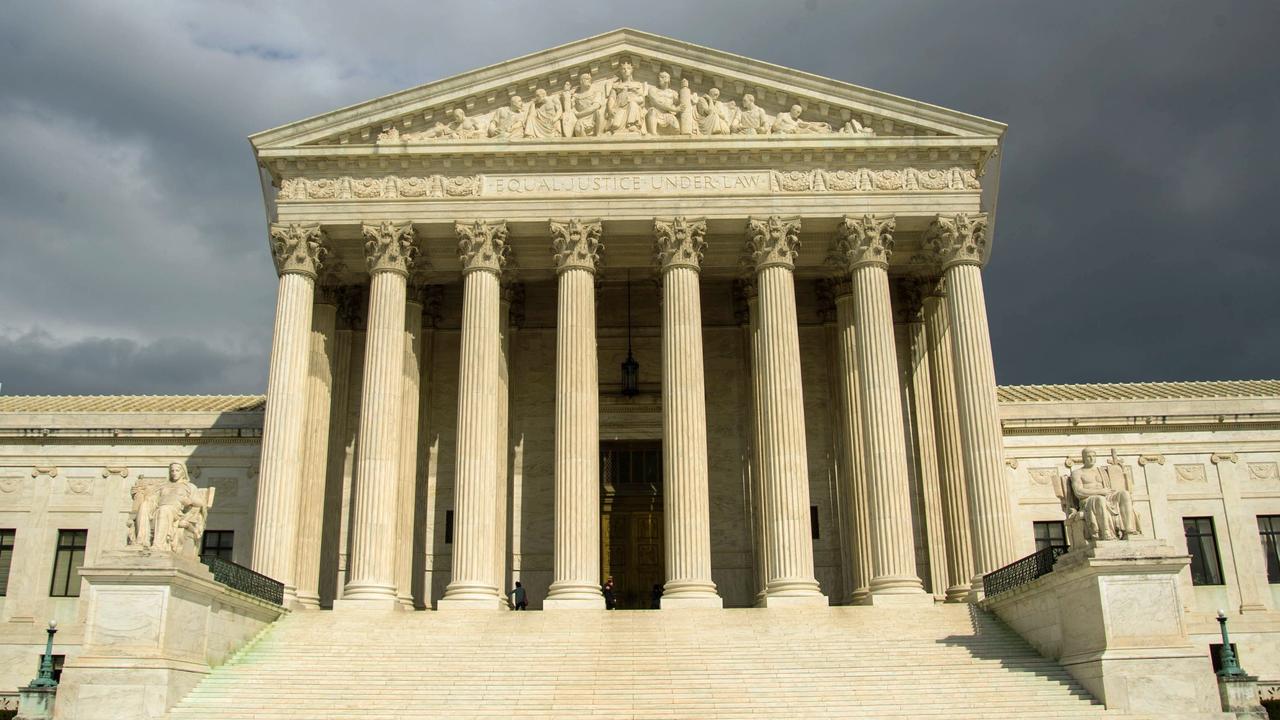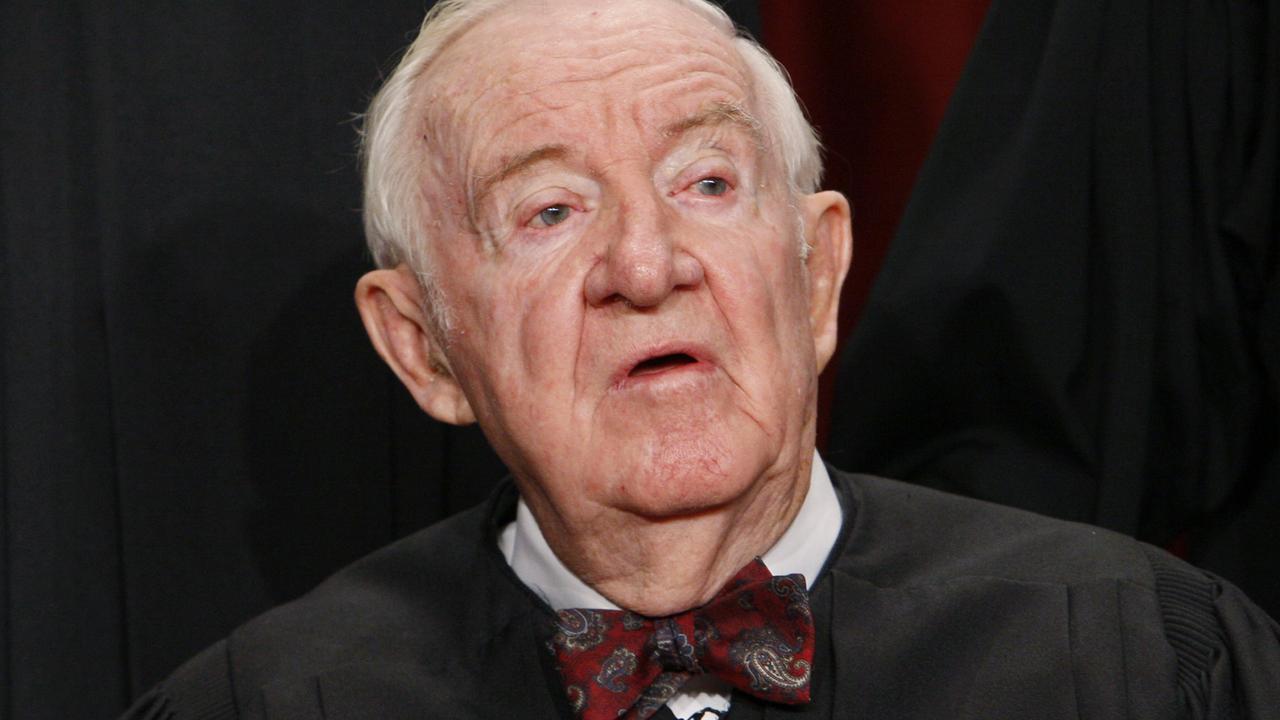Sam Clench on America’s gun control myth: How the Second Amendment’s meaning was twisted
One argument stands in the way of stricter gun control in the United States. That argument is based on a shameless myth.
ANALYSIS
America’s politicians are doing the same thing they always do in the wake of a particularly heinous mass shooting.
The Republicans, led by Donald Trump, are pretending their country’s lax gun laws are not the problem.
“Mental illness and hatred pull the trigger, not the gun,” Mr Trump said this week.
RELATED: Trump proposes linking gun control to immigration reform
RELATED: Trump blames ‘mentally ill monsters’ for mass shootings
RELATED: Trump visits El Paso, Ohio amid protests after shootings
Meanwhile the Democrats, led by their presidential candidates, are pretending they have the answers.
Those answers take the form of universal background checks, an assault weapons ban, the prohibition of high capacity magazines and red-flag laws to take guns away from potentially dangerous people.
We love to bash the Republicans and the National Rifle Association (NRA) after gun massacres, and for good reason. They deserve it.
It’s less fashionable to point out that both sides of American politics are deluding themselves.

Suppose the Democrats take total control of Congress next year. Joe Biden becomes president, and proceeds to sign every one of his party’s standard gun control ideas into law.
Would America’s epidemic of gun violence end? Would it even slow down?
An assault weapons ban might have some effect, making it harder for mentally unbalanced people to target dozens of victims at once. Perhaps we would see fewer horrifying death tolls, like the ones in El Paso and Dayton.
But the vast, vast majority of America’s gun homicides do not happen in mass shootings. Seventy per cent involve handguns, not assault weapons. The ban would do nothing to address those.
It certainly wouldn’t stop dozens of children a year from accidentally shooting each other with their parents’ guns.
What about universal background checks? A number of studies in recent years have examined their impact on gun homicide rates, and found it to be inconclusive at best.
These policies are fiddling at the edges. They’re ignoring the core of the problem, which is quite simply that America already has far too many guns in public circulation.
The figures are staggering. According to the Small Arms Survey, there are 393 million firearms in civilians’ possession — easily more guns than people, with tens of millions to spare. And that number is still going up.
The only way to make a real difference is to reduce it.

If they’re going to get a significant number of those 393 million weapons off the streets, the Democrats need to be bolder. Much bolder.
That means expanding their proposed assault weapons ban to include semiautomatic guns and at least some handguns; introducing stringent gun licencing; and supporting a mandatory buyback program, like the one Australia had under the Howard government.
Most importantly — as insane as it might sound — it means pushing to eventually repeal or reinterpret the Second Amendment.
Is that task impossible? Maybe. It certainly won’t happen overnight. But the meaning of the Second Amendment has been changed before.
Which brings us, at last, to the shameless myth that has perverted America’s gun control debate, to such an extent that solving the crisis might now be impossible.
That myth is the idea that the Second Amendment was designed to give individual Americans the right to own guns.

It may surprise you to learn that for the vast majority of US history — hundreds of years, in fact — that was not the dominant legal opinion.
The courts interpreted the Second Amendment far more narrowly, repeatedly ruling that it gave the American people a collective right to bear arms within state militias — not an individual right to keep guns for their own purposes.
Three times, in 1876, 1886 and 1939, the Supreme Court reaffirmed that view.
Even the NRA itself once accepted it. But as the lobby group grew more brash in the middle of the 20th century, it started to push for a new, broader definition.
It took gun activists decades of concerted campaigning to change things, gradually twisting the meaning of the Second Amendment until academic and judicial opinion lined up on their side.
A former Chief Justice of the Supreme Court, Warren Burger, once described that effort as “one of the greatest pieces of fraud — I repeat the word, fraud — on the American public by special interest groups that I have ever seen in my lifetime”.
Fraudulent or not, you can see just how effective the NRA’s lobbying was by looking at the academic record. Researcher Carl Bogus — an unfortunate name, I’ll grant you — did just that in a journal article back in 2000.
He found that before the year 1960, no law articles opining on the Second Amendment had ever supported the “individual right” view. None at all. By 1970, that had grown to three articles, compared to 22 supporting the “collective right” interpretation.
Then, between 1970 and 1989, the argument was flipped on its head, with 27 articles supporting the individual right and 25 backing the traditional view.
That was the context for Chief Justice Burger’s extraordinarily frank assessment, delivered in 1991.
The gun activists’ lobbying eventually culminated in a landmark Supreme Court decision in the 2008 case District of Columbia vs Heller.
By a margin of one vote, the court rejected the traditional interpretation and ruled that the Second Amendment “conferred an individual right to keep and bear arms”.
That decision now hangs forebodingly over the entire gun debate. Whatever legislation Democrats manage to pass, there is always a risk the courts will strike it down.
There are two ways to fix the situation.
The first is for the Supreme Court to contradict itself again and issue a ruling re-endorsing the amendment’s original definition.
That will not happen until there are fewer conservative justices on the bench. Given the current justices are there for life, it could take quite some time.
The second option is to repeal the Second Amendment altogether.
That was the approach supported by late Supreme Court Justice John Paul Stevens — a Republican, by the way — who famously wrote the dissenting opinion in District of Columbia vs Heller.
Last year, Justice Stevens published a blunt piece in the New York Times calling for the amendment to be repealed.
He wrote it in response to thousands of protesters who had marched in major cities across the country, demanding stricter gun laws in the aftermath of the Parkland school shooting.
“The demonstrators should seek more effective and more lasting reform. They should demand a repeal of the Second Amendment,” Justice Stevens wrote, calling out his colleagues for their ruling in 2008.
“That decision, which I remain convinced was wrong and certainly was debatable, has provided the NRA with a propaganda weapon of immense power,” he said.
“Overturning that decision via a constitutional amendment to get rid of the Second Amendment would be simple and would do more to weaken the NRA’s ability to stymie legislative debate and block constructive gun control legislation than any other available option.
“It would eliminate the only legal rule that protects sellers of firearms in the United States, unlike every other market in the world.”

I’ll take issue with one thing Justice Stevens said. Repealing the Second Amendment would certainly not be “simple”.
Only one constitutional amendment has been ditched before — the one prohibiting alcohol. As you’d imagine, there was near unanimous support for that.
The process requires a two-thirds majority in both the House of Representatives and the Senate, then the approval of three-quarters of the states. On a contentious issue like gun rights, it would take years, or more likely decades, of effort.
Then there are the political risks. While most Americans do support tighter gun control measures, often quite overwhelmingly, repealing the Second Amendment is obviously a more radical proposition — and the voters who care most deeply about the gun debate are opposed to it.
“The question is intensity vs preference. You can always get a certain percentage to say they are in favour of some gun controls, but are they going to vote on their ‘control’ position?” Republican strategist Grover Norquist said.
“For that 4-5 per cent who care about guns, they will vote on this.”
In other words, guns are only the number one, non-negotiable election issue for pro-gun voters. Other Americans will base their votes on other factors.
So if the Democrats were to come out in favour of repealing the Second Amendment, they would immediately and inexorably alienate a huge chunk of the electorate.
That is why they pretend ideas like background checks and assault weapon bans are the answer. It’s easier than admitting what really needs to be done.
Sam Clench is news.com.au’s political reporter. Continue the conversation @SamClench




